
How India lost out on 4 ODI World Cup trophies by opting to bowl first
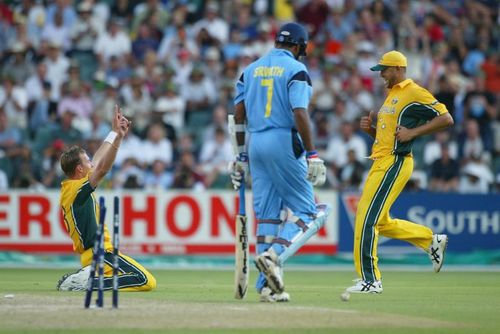
The decision to bat or bowl first is a tough one to make, especially in big World Cup matches. Lot of factors need to be considered: pitch, dew, overhead conditions, weather forecast, recent record and the opposition team's strengths and weaknesses.
In neutral conditions, common sense suggests that a team should bat first and try to put the pressure on the opposition, by having runs on the scoreboard. As we witnessed during India's semifinal in the 2019 World Cup, scoreboard pressure - even with an average total - can result in cold feet for the chasing side.
However, due to a plethora of reasons, the Indian team - led by various captains - potentially lost the chance to win four consecutive World Cups in a span of 11 years. While the team's performance was criticised on all occasions, the lack of a clear strategy in all these games was shocking, to say the least.
A common pattern in all these four do-or-die World Cup matches was India opting to bowl first. While most of these decisions were affected by India's results against the same team in previous matches in the tournament, others were a result of a confused strategy and a lack of clarity.
India lost early wickets in all these chases and never found enough momentum with their middle-order partnerships in any of these matches. Another drawback was the teams' inability to identify their weakness in chasing down totals in big matches, especially in ICC tournaments.
Despite having improved their ICC tournament record in the last decade or so, the Indian team has not been able to rectify their tendency of getting overwhelmed in big-match chases in ODI World Cups.
On that note, let us have a look at these four World Cup matches, which India lost after winning the toss and choosing to bowl first.
Four big World Cup matches India lost by opting to bowl first:
#1: Semifinal vs Sri Lanka, 1996 World Cup
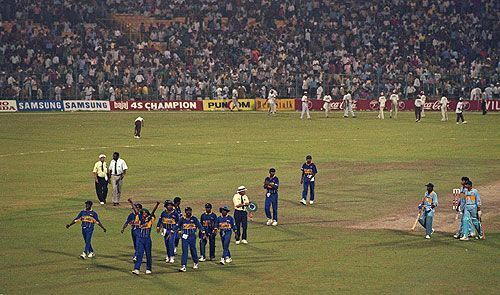
The Indian team enjoyed a decent run on their way to the quarterfinal of the 1996 World Cup. India lost only two matches, including a narrow defeat to Australia and a loss to Sri Lanka in a high-scoring contest.
Winning the toss in the all important quarterfinal against Pakistan, the team led by Mohammad Azharuddin decided to bat first and posted a challenging total of 287 runs.
Despite a scintillating start by the Pakistani openers, India's bowling attack spearheaded by three Karnataka local boys dismantled Pakistan's chase in the middle overs. India were just a win away from a World Cup final berth after 13 years. Facing an unbeaten Sri Lankan team in the semifinal, Azhar won the toss and chose to bowl first.
The decision looked like a masterstroke when Sri Lanka's attacking openers Sanath Jayasuriya and Romesh Kaluwitharana both holed out in the very first over, trying to hit Javagal Srinath to the boundary. Soon, Sri Lanka were 35 for 3. But a counter-attacking innings by Aravinda De Silva provided a good platform to middle-order batsmen like Roshan Mahanama, Arjuna Ranatunga and Hassan Tillakaratne to take Sri Lanka's total past 250.
India lost opener Navjot Sidhu early, but a solid 90-run partnership between Sachin Tendulkar and Sanjay Manjrekar provided the team enough hope to chase down the remaining 150 runs with eight wickets in hand. But Tendulkar's wicket off the bowling of Sanath Jayasuriya saw the beginning of one of modern cricket's most infamous collapses. For the addition of 22 runs, India lost seven wickets.
Vinod Kambli was the only specialist batsman who survived this collapse. But before India's number ten Anil Kumble could face a ball, the crowd had caused enough disturbance that match referee Sir Clive Lloyd called off the match and awarded it to Sri Lanka.
In a recent online interview with Ravichandran Ashwin, Sanjay Manjrekar said that Sri Lanka's attacking approach while easily chasing a total of 272 in their earlier group match against India was one of the reasons why the hosts decided to bowl first. He said that though the pitch did not deteriorate much in the semifinal, Sri Lanka with their spinners like Muttiah Muralitharan, Kumar Dharmasena, Jayasuriya and De Silva had enough bowlers bowling just the right pace and trajectory for the pitch.
Manjrekar also said that India didn't have a proper strategy or the temperament to chase the total once they lost wickets at the top.
#2: First Super Sixes Match vs Australia, 1999 World Cup
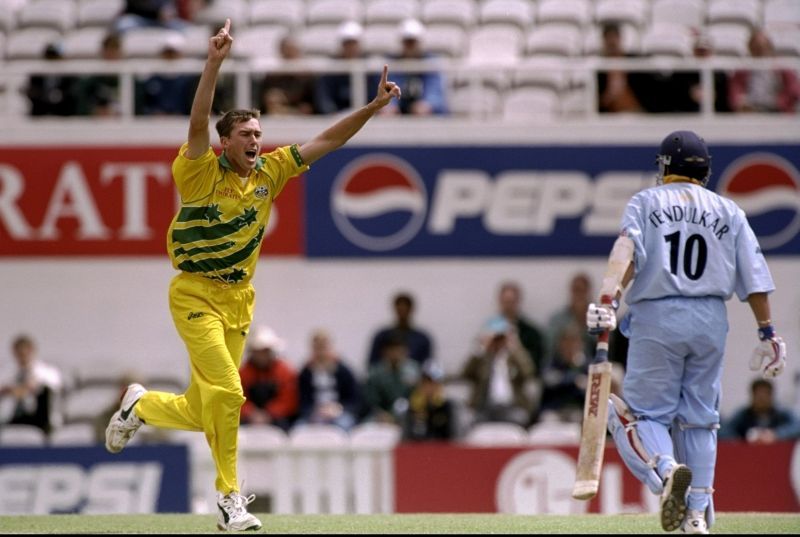
This is the least talked about match on the entire list, and for a few valid reasons too.
India were not the favourites going into the 1999 World Cup, having not won a single tournament - Test or ODI - in the six months leading up to the tournament. India lost their first two matches, and Sachin Tendulkar was yet to return to England from his father's funeral in Mumbai. India had to win all of their three remaining group matches and by big margins to have any chance of getting a Super-Six berth.
Tendulkar's emphatic return, along with Rahul Dravid's calm and collected effort, helped India register their first win in the tournament. In their next two matches, India were up against defending champions Sri Lanka and home team England - with all three teams fighting for a place in the top three. That was when Sourav Ganguly and Rahul Dravid decided to take the onus of the team's batting, and India made it to the Super Six in a miraculous turnaround.
Although India won all the three matches after batting first, they were actually put in by the opposition team on each occasion. However, India's captain Mohammad Azharuddin did not have any plans of capitalising on this winning momentum by batting first in their first Super-Six match.
In this match, India were facing Australia who were in a similar situation as India were at the end of the group stage. Both teams had to win all their matches to ensure a semifinal berth, so this match was like a virtual knockout. On one of England's flattest wickets - the Oval - Azhar won the toss and decided to field first.
A 97-run opening partnership helped Australia to a big total of 282, despite the team losing wickets regularly in the middle overs. During India's chase, Glenn McGrath and Damien Fleming were unplayable in their opening spells, taking the wickets of Tendulkar, Ganguly, Dravid and Azhar in the first seven overs. Although Ajay Jadeja scored an unbeaten century and Robin Singh made 75, the rest of the nine batsman managed only 20 runs together.
Tendulkar could not replicate his heroics in the virtual semifinal and the final of the Coca Cola Cup in Sharjah the previous year in this match. Surprisingly, India won their next match against Pakistan, that too batting first. But to think of winning by a huge margin in their last super against eventual semifinalists New Zealand was a bit too far fetched. India lost that match and returned home after a wildly adventurous month of cricket in England.
#3: Final vs Australia, 2003 World Cup
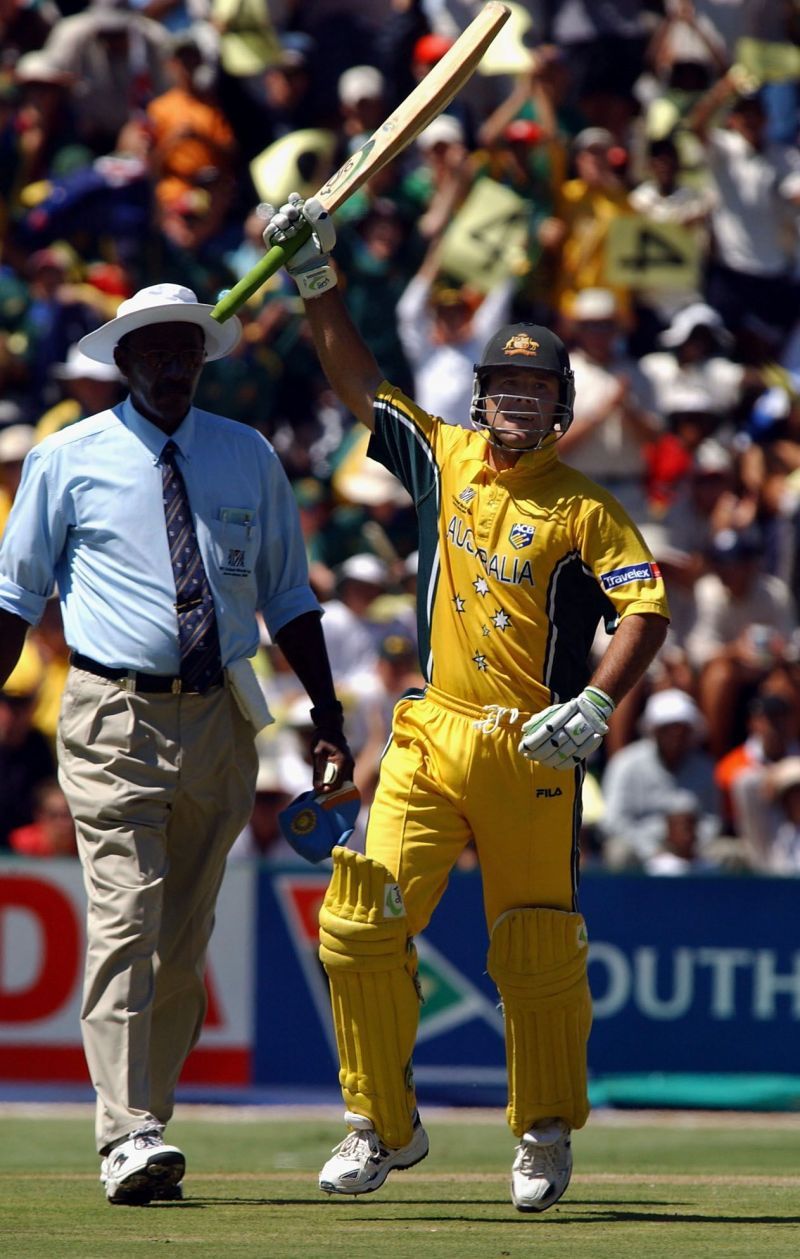
If you ask millenial Indian cricket fans about their biggest disappointment, it has to be this match. While the 2011 World Cup victory got the entire nation celebrating, everyone rues the fact that Sourav Ganguly's team could not do it in 2003. Despite losing some big names after the match-fixing controversy in 2000, this team had some amazing achievements in the five years that Ganguly was captain.
If there was one team that would regularly challenge Australia - the most dominant team of that era - it was India. Then why could India not give the Aussies a fight in a World Cup final after winning eight consecutive matches in the tournamen so convincingly?
Well, just like in the 1996 World Cup, India suffered a defeat to the eventual champions Australia while batting first in a group-game encounter in the 2003 edition. This group-stage defeat was even more humiliating as the team could only manage 125 runs and take one opposition wicket.
While that was one of the reasons why India decided to bowl in the final, a damp pitch on the morning made Sourav Ganguly think that his seam bowlers were in with a chance. With 49 cumulative wickets taken by the trio of Zaheer Khan, Javagal Srinath and Ashish Nehra in the tournament, the bowling attack had gained a reputation for triggering collapses.
That thinking certainly didn't work, however, as Australia's openers cruised to 100 runs in the first 13 overs. Even though Harbhajan Singh got the wickets of both the openers in the next six overs, Australia's next two batsmen - Damien Martyn and captain Ricky Ponting - held their nerves comfortably to play out the middle overs. Ponting, in particular, unleashed himself with an attacking display after reaching his half century around the 35th over.
He played with such audacity that India's star-studded bowling lineup looked like that of a school team as Australia posted a mammoth total on the board. India's batting only looked good during the 88-run partnership between Virender Sehwag and Rahul Dravid as the team eventually lost the match by 125 runs.
Just like in the 1999 World Cup match against Australia where India expected Sachin Tendulkar to replicate his innings that won India the Sharjah final in 1998, this team backed itself to chase down any total. That was because they had chased down two of the three tallest totals in ODI cricket at that point of time - including one in a final.
However, things did not go according to plan against Australia in the final. In fact, India lost their reputation of being a good chasing side for at least the next four years. The 2003 World Cup final was a prominent blemish in India's 20 finals between 1999 and 2005, with India winning only one match during this period.
#4: Last Group Stage Match vs Sri Lanka, 2007 World Cup
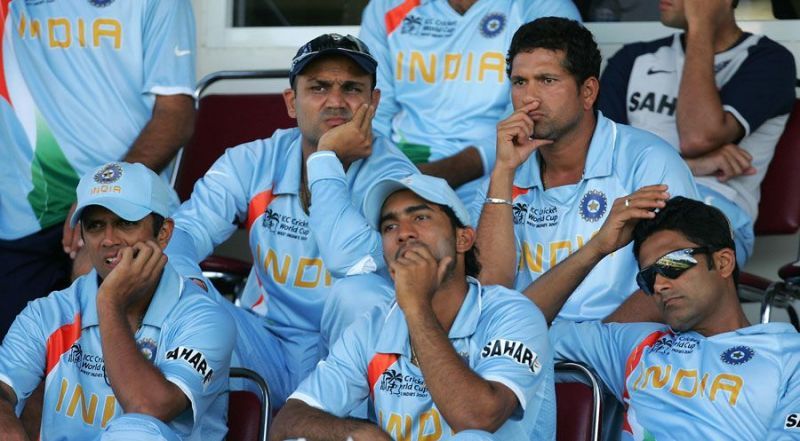
An amazing thing about this match is that it was played exactly four years to the day after the 2003 World Cup final. The other coincidence between the two matches is the fact that India bowled first after winning the toss, Anil Kumble was left out yet again despite being in the squad, and Dravid and Sehwag were the only batsmen to get decent scores.
While India got off to a shocking start by losing to Bangladesh in their very first match of the 2007 World Cup, the team turned things around in the next couple of days.
In their do-or-die match against competition debutants Bermuda, India not only had to win the match but do so by a convincing margin to boost their poor net run rate. India were up for the challenge, posting the first-ever 400-run total in a World Cup and registering the highest margin of victory by runs in ODI cricket history at that time.
The Indian team, which had gone through an inconsistent phase in the past year-and-a-half, now had only one match to focus on. Winning against Sri Lanka would have ensured a super-eight berth for India, but losing it meant that India had to depend on Bermuda pulling off an unlikely win over Bangladesh.
Having batted first in both their matches, India had played enough to get acclimatised to the conditions at the Queen's Park Oval in Port of Spain.
By the end of the previous game, Sourav Ganguly, Virender Sehwag, Sachin Tendulkar and Yuvraj Singh had found form\. But captain Dravid, who had not moved on from the defeat to Bangladesh where India batted first, chose to bowl first after winning the toss this time around.
Dravid had made up his mind to bowl first even in the previous game against Bermuda if he had won the toss. But now that India had gathered momentum while batting first (in the match against Bermuda), it would have made more sense to bat first in this game as well.
Dravid also didn't take note of the fact that India lost all their last four completed tournament finals in which they batted second against Sri Lanka between 2000 and 2005. By now, the team had developed cold feet while chasing totals against the likes of Chaminda Vaas and Muttiah Muralitharan.
Back to the match in question, the Indian bowlers restricted the Sri Lankans to a chaseable total of 254. But with all the experience in their batting, the highest partnership registered in India's innings was one of 54 runs only.
India had the world's best batting lineup on paper, but the team had shuffled a lot of players from their preferred positions over the past 18 months. Sri Lanka won the match by 69 runs, and Ganguly, Dravid and Kumble's dream of winning a World Cup medal was over.
However, few people would know that in six month's time, this team would become the limited-overs side to reckon with, winning all the three ICC tournaments once over the next six years.
Few people could fathom that T20 - a format India had played only once at the international level - would become the lifeline of BCCI. And few knew that MS Dhoni - the wicketkeeper batsman who made his debut just 27 months before - would be at the helm of affairs.
Although India won only one of the next three editions of the 50-over World Cup, they never bowled first after winning the toss in any do-or-die or knockout match. Coincidentally, India didn't lose any of the knockout matches where they batted first since that defeat to Sri Lanka at the 2007 World Cup.